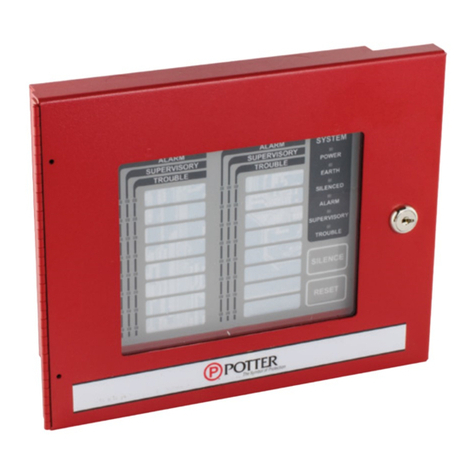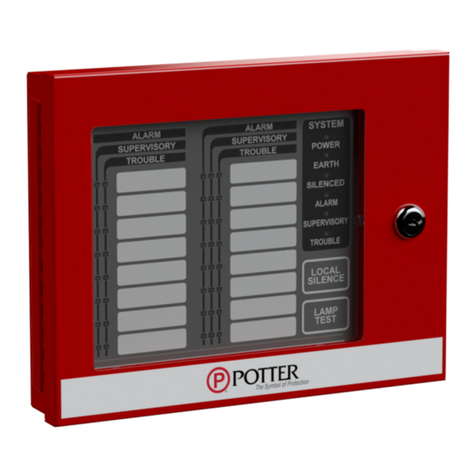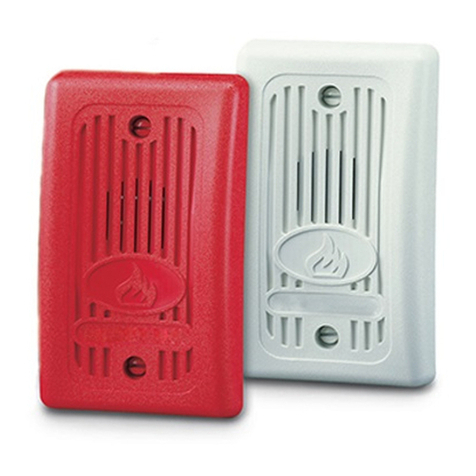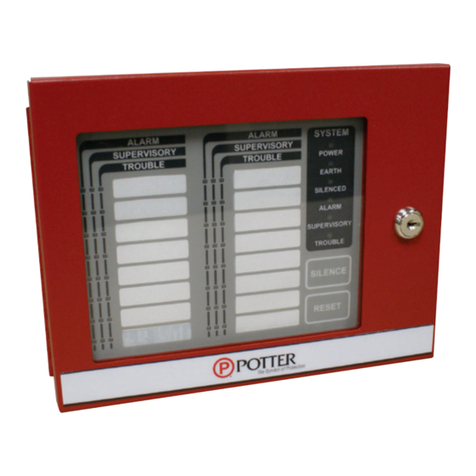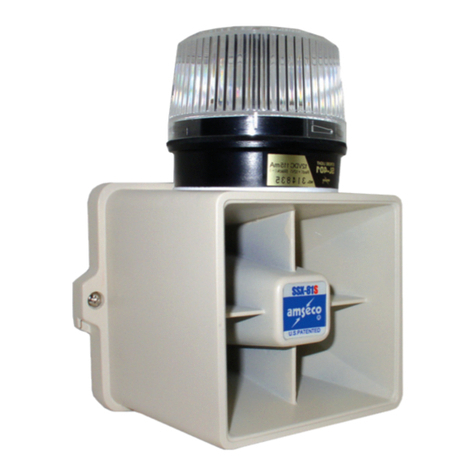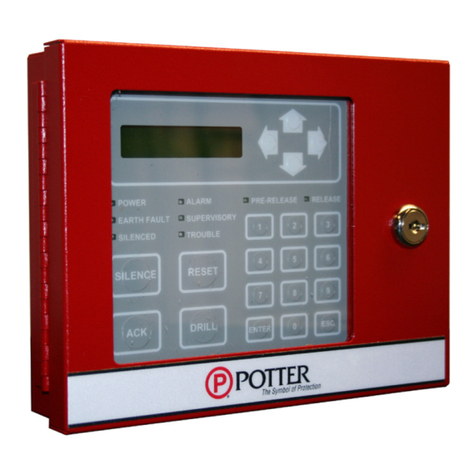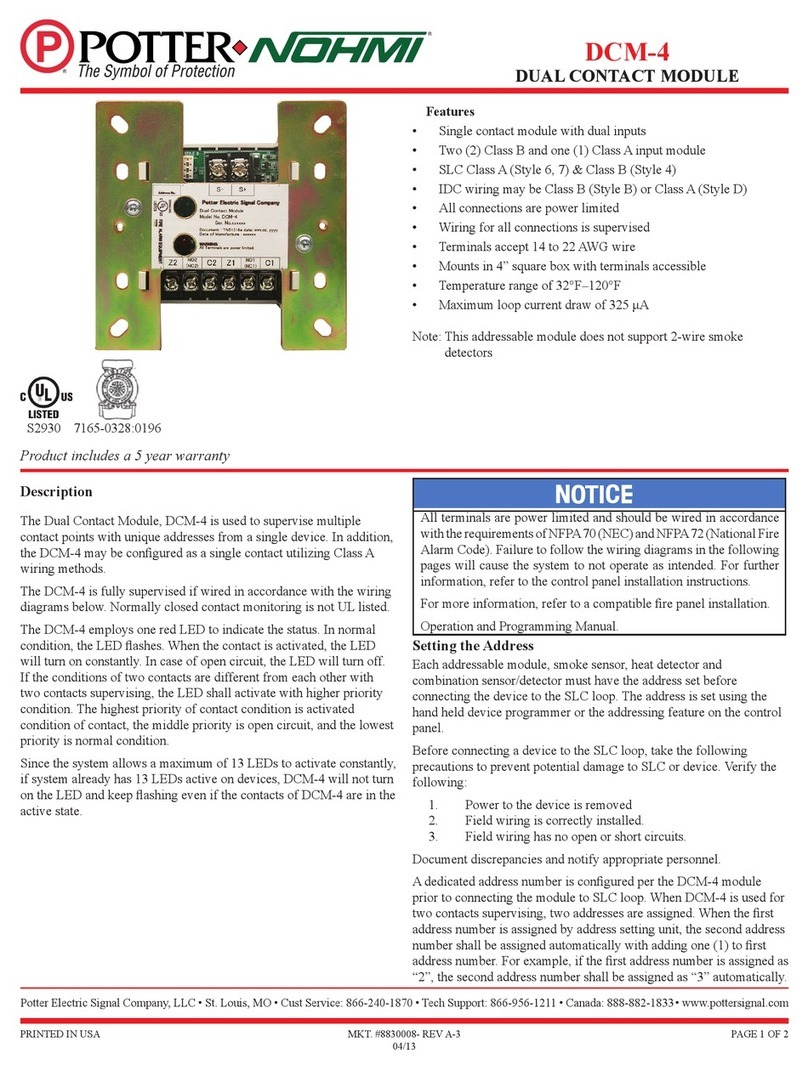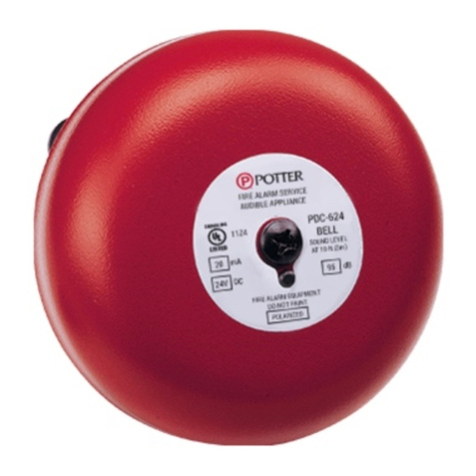
VSA-S
VAULT SOUND ALARM
SYSTEM
PAGE 1 OF 4
PRINTED IN USA MKT. #8870002 - REV L
8/02
Potter Electric Signal Company • 2081 Craig Road, St. Louis, MO, 63146-4161 • Phone: 800-325-3936/Canada 888-882-1833 • www.pottersignal.com
UL Listed
Dimensions: 12 1/4"H x 8 3/8"W x 3 1/8"D
31,1cm H x 21,3cm W x 7,9 cm D
Weight: 8 lbs. (3,6 kg.)
Enclosure: 18 Gauge - Cold Rolled Steel
Power Input: 12VAC, 20VA, 60Hz
Operating Voltage: 6VDC
Typical Current: 20mA
Alarm Current: 25mA
Contact Ratings: Alarm Relay and
Tamper Switch
1.0 Amp at 28VDC
0.1 Amp at 130VDC
The Model VSA is a sound detection system listed by Underwriters’
Laboratories, Inc. for the primary protection of reverberant and non-
reverberant vaults such as bank and mercantile vaults.
Where U.L. certification is required, the VSA system must be installed in
compliance with U.L. 681. Including at least one manual initiating device
in the vault and connection of the VSA to a U.L. listed control unit.
The VSA amplifier unit is housed in a tampered steel cabinet with
provisions for conduit connections.
The standby battery provides in excess of 80 hours operation in the event
of a power failure. An external low voltage plug-in transformer maintains
the battery at a fully charged state.
The amplifier unit provides SPDT alarm relay contacts and provisions for
1 to 10 microphones to be connected into the supervised microphone
circuit.
The VSA contains a DC differential balance control which is adjusted so
that the impedance of the external microphone circuit is balanced with the
INSTALLATION - SEE FIGS. 1, 2, 3 AND 4
1. Mount VSA amplifier unit. (See Fig. 7 Suggested Wire Routing.)
2. Connect BLACK battery lead to NEGATIVE battery post.
3. Connect RED battery lead to POSITIVE battery post.
4. Plug in transformer to unswitched 110VAC outlet and apply 12VAC to
terminals 1 and 2 of VSA amplifier.
5. Mount microphones and wire according to installation drawing (see
Figs. 1, 2, 3, and 4).
Note: A PSM-T or PSM-FT (microphone with built-in test sounding
device) must be used in every installation.
6. See Fig. 1 for connection of remote test unit Model PTU-B and/or central
station test unit if applicable.
Note: Install jumper across terminals 12 and 13 if PTU-B is not used.
Maximum of 10 microphones on each VSA amplifier. Microphone
circuit not to exceed 1000 ft. of #22 gauge 2 conductor shielded cable.
Maximum loop resistance 1000 ohms. Battery must be charged for 48
hrs. before putting unit into service.
BALANCE ADJUSTMENT
1. Adjust sensitivity to full CCW position.
2. Monitor balance adjustment jacks on circuit board with 20K ohms per
volt meter set on 10VDC scale.
3. Jumper terminals 4 and 5 on VSA unit. Note meter reading (4.2 to 5.2
volts).
4. Remove jumper from terminals 4 and 5.
5. Adjust balance control to half of previous voltage reading (2.1 to 2.6
volts)
6. If balance control will not adjust to this reading, check wiring for open
shorts or grounds.
SENSITIVITY ADJUSTMENT
1. Adjust the SENSITIVITY control to approximately 1/3 scale.
2. Strike the vault surface with a plastic mallet and adjust the SENSITIV-
ITY control to provide desired protection.
CAUTION: EXTREME CARE SHOULD BE EXERCISED SO THAT THE
PROTECTED SURFACES ARE NOT MARRED OR DAMAGED WHILE
PERFORMING THE ATTACK TESTS.
TESTING
Pressing test button on front of VSA amplifier applies test signal to
sounding device in PSM-T or PSM-FT, causing the VSA to go into the
alarm condition, which is indicated by a RED LED adjacent to the test
button (RED LED will not indicate when sensitivity is set at 2 or below).
If system will not test properly, increase sensitivity control setting until
reliable manual tests are obtained.
Verify that reliable tests are obtained at remote test unit Model PTU-B and/
or from central station test unit if utilized.
The subscriber must be instructed to test the system each time the alarm
is set per instructions on front of VSA amplifier unit.
internal impedance of the differential circuit. The VSA will alarm if the
external impedance of the microphone circuit increases or decreases.
The microphones are available in surface mount (Model PSM) or flush
mount (Model PSM-F). Audio signals detected in the vault enclosure are
fed to the amplifier unit where the sensitivity control determines the sound
level necessary to alarm the unit.
The Models PSM-T (surface mount) and PSM-FT (flush mount) are
microphones with a built-in test sounding device. One PSM-T or PSM-FT
must be used in every application.
An alarm indicator light and test switch are provided for system testing by
the subscriber. Terminals are provided for remote subscriber and/or
central station testing.
The Model APC (Accumulating Pulse Counter) is a plug-in option which
allows the system to alarm after receiving a set number of pulses during
a 10 minute time frame. The pulse counter has an adjustable range of 1
to 9 pulses (see page 4).
